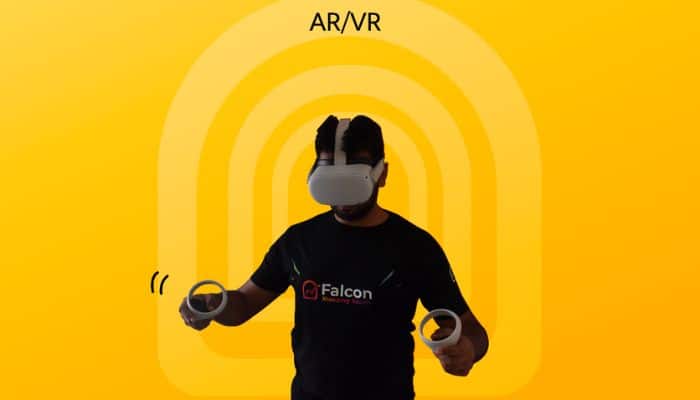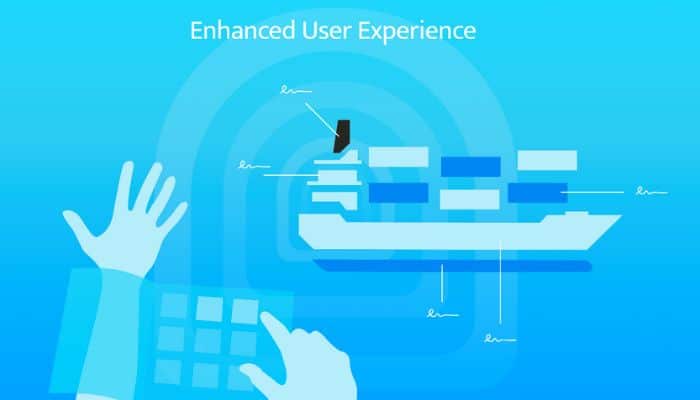5 Reasons Why AR/VR is Not Commonly Used in The Maritime Industry
The maritime industry, which encompasses shipping, navigation, and offshore activities, has traditionally been known for its reliance on practical experience and conventional training methods.
However, with the advancement of technology, industries worldwide are exploring the potential of cutting-edge tools like Augmented Reality (AR) and Virtual Reality (VR) to enhance training, safety, and operational efficiency.

While AR/VR has made inroads into various sectors, it still faces challenges in gaining widespread adoption within the maritime industry. The five main reasons why AR/VR is not commonly used in the maritime industry are:
1. Cost
One of the primary barriers to the widespread integration of AR/VR in the maritime industry is the cost associated with the technology. Implementing AR/VR solutions necessitates significant initial investment in hardware, software, and infrastructure. High-quality AR/VR devices can be expensive, and the maritime industry’s vast scale further adds to the cost burden.
Moreover, many maritime companies, especially smaller ones, may find it challenging to allocate substantial financial resources for adopting AR/VR solutions. They might be hesitant to invest in a technology that they perceive as relatively untested within their specific industry. As a result, cost remains a significant deterrent to embracing AR/VR in the maritime sector.

Potential Solution: To overcome the cost barrier, industry stakeholders can explore collaborations with technology providers to develop more affordable and scalable AR/VR solutions tailored to maritime applications.
2. Ease of Use( User Experience)
Another critical factor affecting the acceptance of AR/VR in the maritime industry is the ease of use and overall user experience. Traditional training methods often involve hands-on learning, which may be more intuitive for individuals accustomed to practical instruction.
AR/VR, on the other hand, requires users to familiarize themselves with the technology and may involve a learning curve. Bulky headsets, motion sickness, and display lag are some challenges that can hinder a smooth user experience, leading to a reluctance to adopt these technologies.
Moreover, maritime professionals, particularly those in older age groups, may find it more challenging to adapt to the new digital learning environment. Ensuring that AR/VR solutions are user-friendly, comfortable, and intuitive is essential for their successful integration into maritime training and operations.

Potential Solution: Developing user-friendly and lightweight AR/VR devices with improved ergonomics and advanced motion tracking capabilities can significantly enhance the user experience. With advancements in technology and innovation with hardware, the size of the Headset will come down substantially. Eventually, it will be a contact lens fixed on your eyeball which would not be noticeable even from a short distance.
3. Lack Of Awareness
Despite the growing popularity of AR/VR in various industries, there remains a lack of awareness within the maritime sector about the benefits and potential applications of these technologies. Many maritime professionals may not be fully aware of how AR/VR can revolutionize training, improve safety, and optimize operational processes.
This lack of awareness can result from limited exposure to AR/VR solutions within the maritime industry or inadequate communication regarding their potential advantages. As a result, decision-makers may be hesitant to invest in a technology they do not fully understand, further inhibiting its widespread adoption.

Potential Solution: Industry-specific conferences, workshops, and seminars can serve as platforms for AR/VR providers to showcase their solutions and educate maritime professionals about the potential benefits. Collaborating with maritime institutions and training centres to introduce AR/VR into their curricula can also help raise awareness and foster a future-ready workforce.
4. Legacy Training Methods
The maritime industry has relied on traditional training methods for generations, and these methods have proven to be effective in many cases. As a result, there is often resistance to adopt newer technologies like AR/VR, with some professionals viewing them as unnecessary disruptions to established training practices.
The familiarity and perceived effectiveness of traditional training methods can create a reluctance to change, hindering the integration of AR/VR solutions. Additionally, some stakeholders may fear that replacing conventional training entirely with AR/VR might compromise the hands-on experience that has been a cornerstone of maritime education.

Potential Solution: To address this challenge, a gradual approach to integrating AR/VR can be adopted. Combining elements of AR/VR with traditional training methods allows for a smoother transition, gradually showcasing the benefits of digital training without entirely replacing time-tested techniques. Demonstrating how AR/VR can complement existing training programs and enhance learning outcomes will be crucial in gaining industry acceptance.
5. No Regulatory Requirements from the Government
In many industries, the adoption of new technologies is facilitated by government regulations or guidelines that mandate or incentivize their use. However, the maritime industry currently lacks specific regulations or requirements regarding the integration of AR/VR into training and operational practices.
The absence of such regulatory pressure can result in a slower pace of adoption, as companies may not see an immediate need to invest in AR/VR solutions. Additionally, the maritime industry operates globally, and varying regulatory landscapes in different regions can create further complexities in implementing standardized AR/VR practices.

Potential Solution: Industry associations and maritime regulatory bodies can collaborate to develop guidelines that promote the integration of AR/VR solutions within maritime training and operations. Highlighting the safety benefits, efficiency improvements, and potential cost savings that AR/VR can offer may encourage governments to consider supporting the adoption of this technology through regulatory incentives.
While AR/VR holds immense potential to transform the maritime industry by improving training, safety, and operational efficiency, its adoption is still limited for several reasons. The high cost of implementation, concerns about ease of use and user experience, lack of awareness, attachment to legacy training methods, and the absence of government regulatory requirements are the main factors hindering its widespread usage.
To overcome these challenges, a concerted effort is required from technology providers, maritime organizations, governments, and industry professionals. Collaborative initiatives, awareness campaigns, gradual integration, and targeted regulations can pave the way for AR/VR to become an indispensable tool in the maritime industry, ushering in a new era of safer, more efficient, and technologically advanced maritime operations.
ABOUT THE AUTHOR:
Aanshul Sharma, Co-Founder and CEO at Falcon Reality
An Merchant Mariner turned Tech Founder, Aanshul has sailed on Oil Tankers and went on to start Falcon Reality – A company leveraging Immersive Technologies (AR/VR) to enhance training experiences for the Maritime Industry. Building Augmented and Virtual Reality Products to make training engaging and fun again.
Do you have info to share with us ? Suggest a correction
Subscribe To Our Newsletters
By subscribing, you agree to our Privacy Policy and may receive occasional deal communications; you can unsubscribe anytime.



